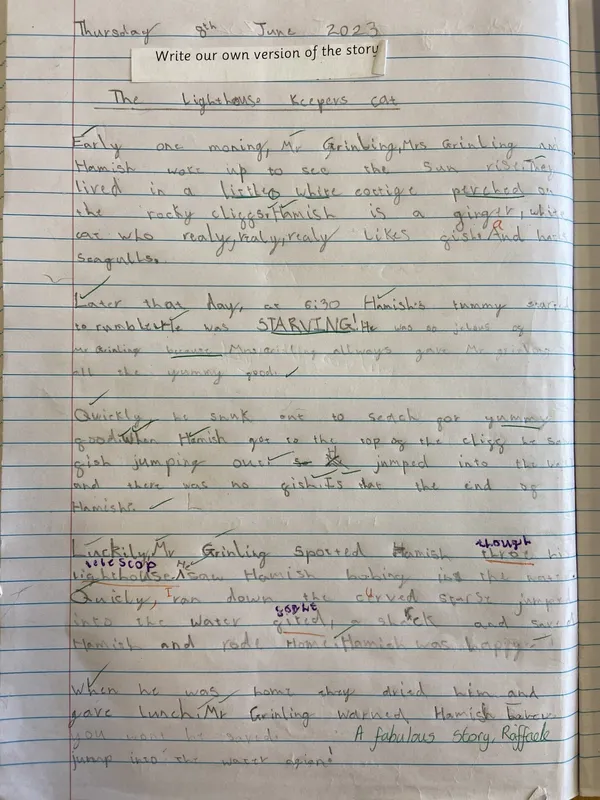English
Reading
“The more that you read the more things you will know, the more that you learn the more places you’ll go!” Dr. Seuss
We believe that reading is an essential life skill and it is our intent to empower our children to become lifelong readers by fostering a love of reading through listening to and interacting with a variety of literature, genres and authors. We also use VIPERS in years 3, 4, 5 & 6 to teach specific reading skills as part of our guided reading lessons.
Key Texts
Our key texts are linked to our learning journey topics. Children enjoy hearing their teacher read the text at the end of the school day and also often explore the text in their reading lessons. Writing opportunities often link to the key texts and children have the opportunity to write in different genres, inspired by the key text. Every year, children learn about a significant person as part of a book study. Children at Meridian enjoy reading stories about the significant person and learning about their life.



Each year group also has a key author for the whole year.
|
Nursery Julia Donaldson |
  |
|
Reception Rachel Bright |
  |
|
Year 1 Nadia Shireen |
  |
|
Year 2 Anthony Brown |
  |
|
Year 3 Valarie Bloom |
  |
|
Year 4 Raymond Briggs |
  |
|
Year 5 Shaun Tan |
  |
|
Year 6 Philip Pullman |
  |
| We have an amazing school library, full of fiction and non-fiction books for the children to enjoy. Every class visits the school library weekly and children enjoy reading in the library and choosing a new book to take home. |  |
 |
 |
Writing
Children have access to high quality texts which inspire writing across a range of genres and for different audiences and purposes.
English skills progression document
|
At Meridian, we recognise that fluent, legible handwriting is an essential skill. We teach accurate letter formation and joins as children progress through the school. Children are given the opportunity to publish their writing to demonstrate their accurate letter formation and best handwriting. Children begin by learning how to hold a pencil correctly and how to form letters accurately. They move on to learning how to join correctly when they are confident with letter formation. |
 |
|
|
Children are taught to write in different genres and for different audiences and purposes across the school. Our writing links to our learning journey topics and, where possible, is linked to our key texts.
|
 |
Phonics
We use the Sounds-Write programme to teach phonics in Nursery, Reception and Key Stage One.


We use the Sounds-Write phonics programme to teach our children to read, spell and write. It starts from what all children know from an early age – the sounds of their own language. In stages, it teaches them how we can spell each of the 44 or so sounds.
We introduce the words and how the alphabet code works.
For example, we start with simple words with one sound and one spelling. Pupils quickly learn to read and spell words such as ‘mum’, ‘dog’, ‘jam’ and ‘sit’.
We move from single-letter sounds spellings to the idea that certain sounds can have two-letter spellings.
We increase the difficulty of one-syllable words. Pupils learn more complex words like ‘elf’, ‘hand’, ‘swim’, ‘trust’ and ‘scrub’.
They go on to learn the concept ‘two letters - one sound’. We introduce the most common consonant two-letter spellings like ‘shop’, ‘chimp’ and ‘thin’.
Finally, we introduce two, three and four letter spellings of the vowels. The pupils learn how to read and spell polysyllabic words. They start with simpler words such as ‘bedbug’. Gradually they move to the more complex, such as ‘mathematical’.
Our approach teaches the conceptual understanding needed to become an effective reader:
- that letters are spellings of sounds: visual language is a representation of spoken language
- that a spelling can contain one, two, three, or four letters. Examples are: s a t, f i sh, n igh t and w eigh t
- that there is more than one way of spelling most sounds. The sound ‘ae’ as in ‘name’, has different spellings as in ‘table’, ‘rain’, ‘eight’ and ‘play’.
- that many spellings can represent more than one sound: like the sound ‘e’ in ‘head’, ‘a-e’ in ‘break’, or ‘ee’ in ‘seat’
Within this conceptual framework, we teach the factual knowledge pupils need to read and spell well.
Reading and spelling also requires pupils to make use of the alphabet code. They need to be able to:
- segment, or separate sounds in words
- blend, or push sounds together to form words
- manipulate sounds: take sounds out and put sounds into words
Sounds-Write provides opportunities for practising these skills on an everyday basis with practice pupils achieve fluent reading and spelling.
Sounds-Write offer a free, online course for parents and carers to help your child to read and write. You can access the free course here.























